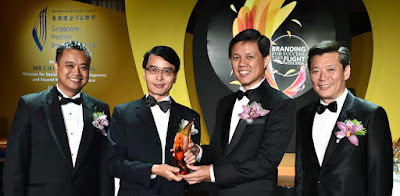The Complexity of Chinese-to-English Translation Communication
In the era of globalization, effective communication is the linchpin for cross-cultural understanding, collaboration, and shared knowledge. At the heart of this intricate process lies the captivating world of Chinese to English Translation—a linguistic endeavor that extends far beyond word conversion, encompassing cultural nuances, contextual richness, and the dynamic interplay between two vastly different languages.
The Artistry and Precision of Chinese to English Translation
Translation, as an art and science, is a delicate dance between linguistic mastery and cultural sensitivity. When traversing from Chinese to English, this dance becomes particularly nuanced due to the distinctive linguistic structures, characters, and cultural intricacies of both languages.
Linguistic Complexity
Chinese, with its logographic script and tonal nature, contrasts sharply with the alphabetic simplicity of English. The translator must navigate the challenge of converting characters into a language that relies on an entirely different set of symbols. Maintaining the essence of the original Chinese text while adhering to English grammatical norms demands a deep understanding of both languages.
Cultural Context
Culture infuses language with layers of meaning, and Chinese culture, rich in history and symbolism, presents a canvas that requires delicate handling. Translators must decipher cultural references, idioms, and historical allusions embedded in the Chinese text to ensure a faithful rendition in English. Failure to grasp these cultural nuances can result in a loss of context and miscommunication.
Technological Advancements in Chinese to English Translation
In the modern landscape, technology plays an increasingly vital role in the translation process. Machine Translation (MT) tools, equipped with artificial intelligence, offer rapid and cost-effective solutions. However, the limitations of these tools in capturing the subtleties of language and cultural nuances underscore the continued importance of human translators in delivering accurate and culturally resonant translations.
Challenges and Considerations
Characteristic Script Differences
One of the primary challenges in English to Chinese Translation lies in the stark contrast of writing systems. Translators must not only convert characters into words but also ensure that the translated text flows naturally in English. The character-based nature of Chinese often requires thoughtful restructuring to convey the same meaning in English.
Tonal Nuances
While English is non-tonal, Chinese is a tonal language where variations in pitch alter the meaning of a word. Translators must navigate this tonal landscape meticulously, ensuring that the intended meaning is conveyed accurately in English, which lacks tonal distinctions.
Idiomatic Expressions
Chinese is replete with idiomatic expressions and cultural metaphors that may not have direct equivalents in English. Translators face the challenge of finding suitable alternatives that capture the essence of the original expression without compromising clarity or cultural relevance.
Regional and Dialectal Variations
China's vast geographical expanse introduces dialectal variations and regional linguistic nuances. A skilled translator recognizes these differences, adapting translations to suit the linguistic preferences and cultural sensibilities of the target English-speaking audience.
The Role of the Human Translator
While technology facilitates translation processes, the human touch remains irreplaceable. Professional translators bring a depth of understanding that goes beyond linguistic conversion, considering cultural nuances, context, and the intended impact on the audience.
Domain-Specific Expertise
Effective Chinese to English translation often demands expertise in specific domains such as legal, medical, technical, or creative fields. Specialized knowledge ensures accurate translations aligned with industry-specific terminology and standards.
Creativity and Adaptation
In creative content and marketing translation, a nuanced approach is essential. Translators become not just conveyors of words but conveyers of emotions, cultural references, and brand identity. Creative adaptation ensures that the translated content resonates with the English-speaking audience while maintaining the essence of the original message.
Unlocking Global Opportunities
Chinese to English translation serves as a gateway to unlock opportunities on the global stage. Whether facilitating international business endeavors, fostering cultural exchange, or disseminating information, accurate translation is instrumental in creating meaningful connections across linguistic and cultural boundaries.
Business Expansion and Global Presence
For Chinese businesses seeking a global presence, effective translation is indispensable. Translated marketing materials, product information, and legal documents are crucial for establishing credibility, building trust, and navigating the intricacies of international markets.
Academic and Cultural Exchange
In the realms of education and cultural exchange, accurate translation facilitates the sharing of knowledge and perspectives between Chinese and English speakers. Translated academic materials, literature, and cultural content bridge the gap, fostering mutual understanding.
Diplomacy and International Relations
In the diplomatic arena, precise translation is pivotal for successful communication. Diplomatic documents, treaties, and speeches must be translated accurately to avoid misunderstandings that could impact international relations.
Conclusion
Chinese to English translation emerges as a dynamic and vital force in the global tapestry of communication. It is a skill that demands linguistic finesse, cultural acuity, and adaptability. In an era where connections transcend borders, skilled translators serve as architects, constructing bridges of understanding between languages and cultures. The art and precision of Chinese to English translation embody the essence of effective communication—building connections, fostering understanding, and enabling the seamless exchange of ideas on a truly global scale.



Comments
Post a Comment